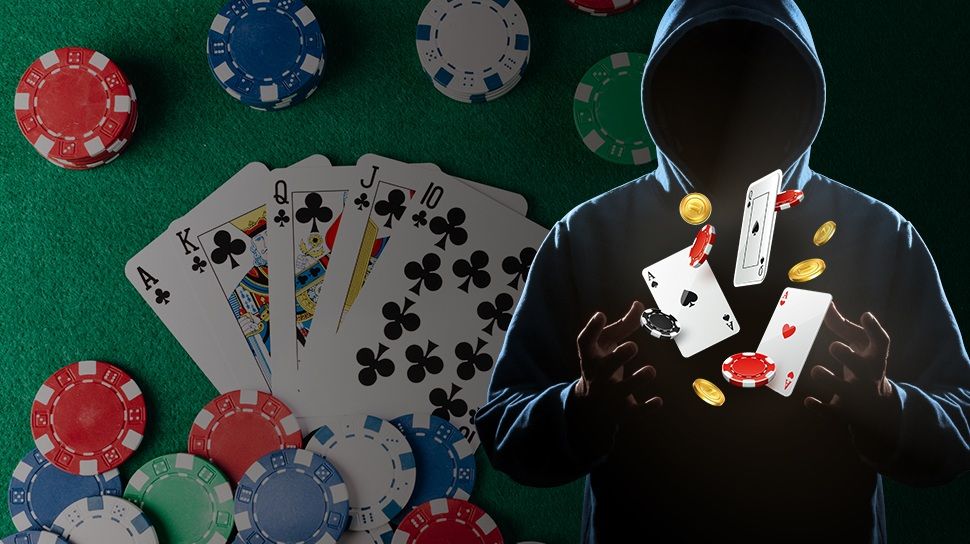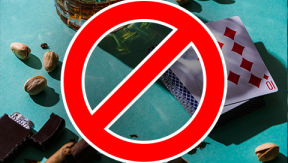
5 Tricks People Try at Casinos in Attempt to Cheat
Yes, people think they can get away with cheating big casinos, and guess what: some have even succeeded. Let’s look at how some people cheat at casinos. Every year, casinos generate billions in income. Take a moment to consider that. It's not in millions but double-digit billions!
It's hardly surprising that casinos are targeted by fraudsters who believe they're smart enough to exploit the system because it pumps out so much money. However, relatively few people can overcome the odds. According to Worldwide Casino Consulting, less than 0.1% of the income generated by casinos is intercepted by fraudsters. The few who do attempt to defraud casinos are nearly always caught.
Working in Cahoots
Cheaters frequently collaborate. For example, one player may try to acquire a good view of the cards a dealer is holding and utilize a wireless signal to communicate with the other players who are in on the con. In 1973, a group of cheats concealed a transmitter in a pack of cigarette cards to send signals. Transmitters have advanced significantly in recent years, and so has casino fraud detection technology.
To prevent it, casinos closely watch everyone on the floor and use special debugging crews to discover illicit communications and pinpoint the culpable players.
Dealer Deals
Collaborating with the dealer is one of the most popular ways to try to scam the casino. For example, the dealer may do a "false shuffle," which means they keep part of the deck in the same order it was dealt.
A former blackjack dealer acknowledged collaborating with gamblers and was busted last year. After begging for pardon, he was able to avoid prison time and avoid a criminal record. Colluding is almost certainly a criminal act in every country, although it can only be punished if proven. As a result, it's no surprise that today's casinos closely monitor their dealers to avoid collusion.
Casinos pay great attention to both their dealers and their customers. They not only monitor the tables with video cameras, but they also keep track of each dealer's losses and gains. Dealers are aware that they are being watched more intently than ever before, and as a result, they are more hesitant to participate in fraud these days.
Changing Out Bad Cards for Better Cards
One of the simplest and most prevalent strategies for players to enhance their odds is to replace the card in their hand with a better one. They generally try to do this by either replacing a card with one of their own or coordinating with a player next to them to shuffle cards in and out. They employ gadgets to swap cards because they know casinos are observing the tables intently. For example, a retractable brass device that enables players to switch one of their cards in their hand with one shoved down their sleeve.
Because this is a popular threat, the house is constantly on the lookout for it. Dealers must deal with this issue by keeping track of all cards on the table and looking for athletic people wearing long-sleeved shirts to avoid danger. Casinos also have a dealing shoe that scans a specific code on the back of their cards, and this is one of the most recent gadgets used by dealers to identify scams immediately.
Past Posting
Past posting is a type of fraud in which players attempt to exchange chips they've earned with higher valued ones. People who play blackjack, poker, or roulette try it.
This deception necessitates the scammer being much more skillful with sleight of hand skills than for card swapping. Past posting is incredibly hard to get away with these days because tables are regularly watched with closed-circuit cameras. Players in roulette may attempt to place bets after the ball has already landed in the pocket. This is far harder to accomplish since it necessitates distracting the dealer.
Dealers are taught to avoid distractions, making it difficult to pull off without an effective diversion. If a player attempts to cash in an unusually large quantity of chips, the casino may demand that they wait while the casino tape is reviewed to ensure that the person has earned their chips lawfully. If a player is caught changing chips at the tables, they will be removed by security.
Marking Cards
As the name indicates, card marking creates minor marks on cards so that the player may recognize them later using infrared optics and invisible ink.
This is a newer cheating technique than swapping cards, but many arrogant con artists have already tried it, believing that casinos aren't sophisticated enough to catch them in the act. However, since the invention of invisible ink, casinos have devised innovative methods to catch people marking cards.
How casinos avoid it: Card marking was a common means of cheating until casinos began utilizing riffle tests to detect marked cards. A riffle test works as follows:
- Several times, the dealer riffles the cards from the bottom of the deck.
- They examine the cards attentively to see whether there is any animation impact.
- If they see any movement, they will know the cards have been marked with visible ink.
Some con artists have attempted to pick out marked cards using infrared optics and invisible ink in recent years. Most casino cheats aren't as skilled or committed. Dealers in many casinos use infrared glasses to readily detect marked cards, in addition to paying close attention to the specific hands that players produce to figure out which player marked the cards.

Conclusion
Other Articles You May Be Interested In







